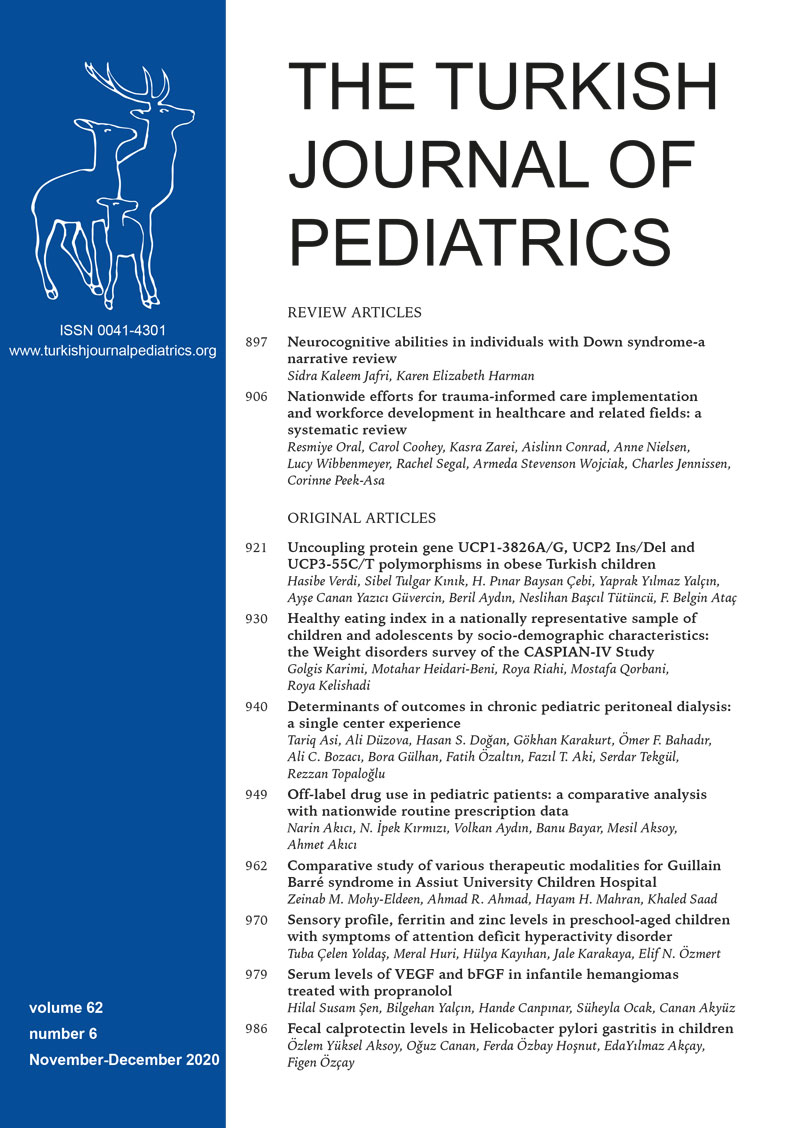Abstract
Background. In situations where it may take a long time to perform renal transplantation peritoneal dialysis may become a long-term maintenance treatment, especially in countries with low donor rates. Therefore, we aimed to evaluate peritonitis, catheter revision and survival rates in children on chronic peritoneal dialysis (CPD); and to define related factors in a single tertiary center from a WHO upper middle income country.
Methods. Between January 1998 and September 2018, data of pediatric patients receiving CPD with a followup longer than 3 months were retrospectively analyzed. Demographic, clinical and catheter-related data were collected. Patients were grouped as being operated before/after 2009 in order to evaluate the effects of 2 different periods on outcomes.
Results. A total of 229 catheters in 132 patients were included in the study. The female to male ratio was 60/72. The mean age at the time of dialysis was 8.9 ± 5.5 years. The median follow-up period was 22.5 months (IQR 8.25-50; range 3-139). Peritonitis incidence in 1998-2008 and 2009-2018 periods was 0.13 episodes/patient-year and 0.09 episodes/ patient-year, respectively. The overall revision rate was 1 per 46.7 patient-months. Peritonitis history was the only independent risk factor for access revision (p=0.003). Peritoneal dialysis failure was observed in 25% (33/132) of patients. The need for catheter revision due to any cause, the presence of peritonitis, history of HD and infancy were independent risk factors for PD failure. The overall mortality rate was 15.2%(20/132). Having a history of temporary PD catheter placement and being infant were independent risk factors for mortality.
Conclusions. Access revision is still an important complication leading to PD failure despite the development of surgical techniques. Peritonitis is the most important cause of access revision and PD failure.
Keywords: children, complication, end stage renal disease, outcome, peritoneal dialysis
Copyright and license
Copyright © 2020 The Author(s). This is an open access article distributed under the Creative Commons Attribution License (CC BY), which permits unrestricted use, distribution, and reproduction in any medium or format, provided the original work is properly cited.














